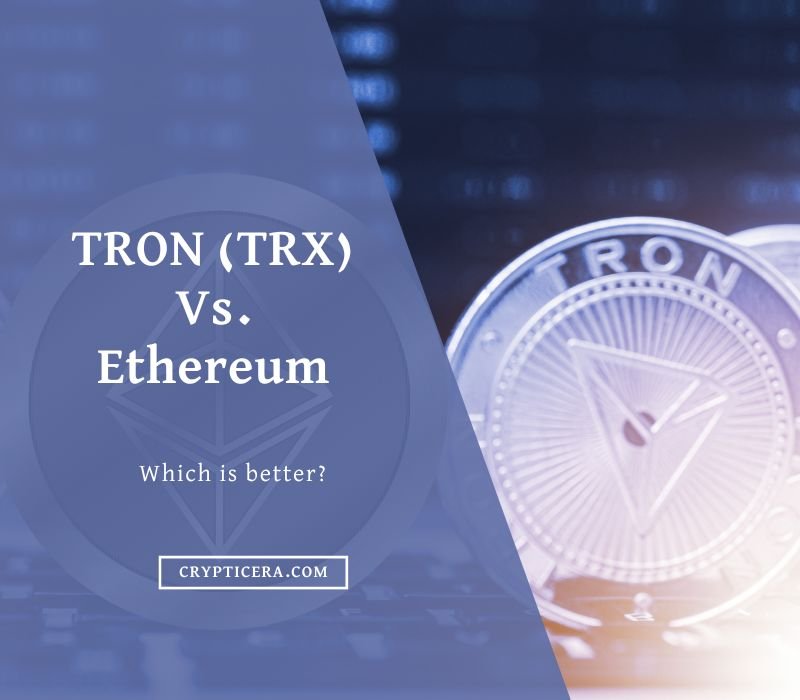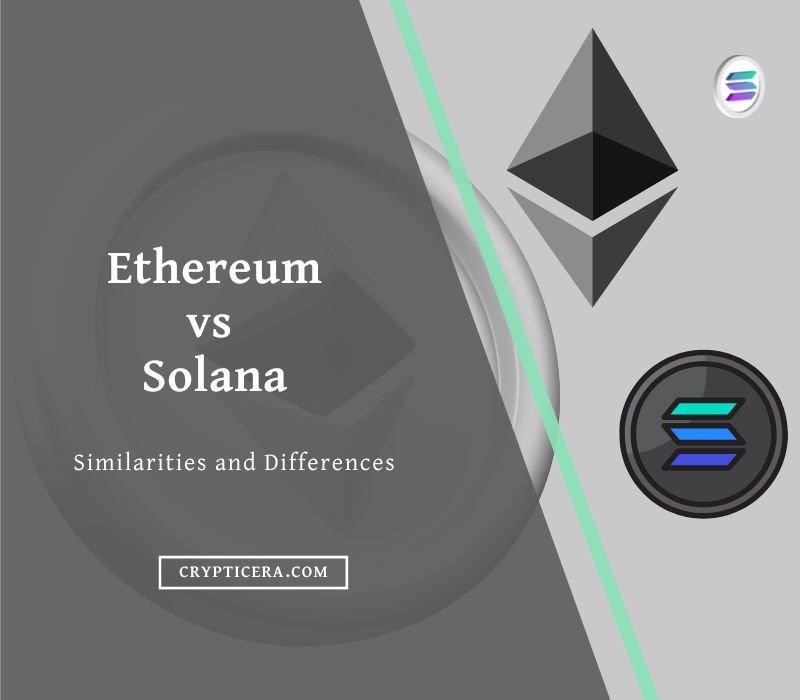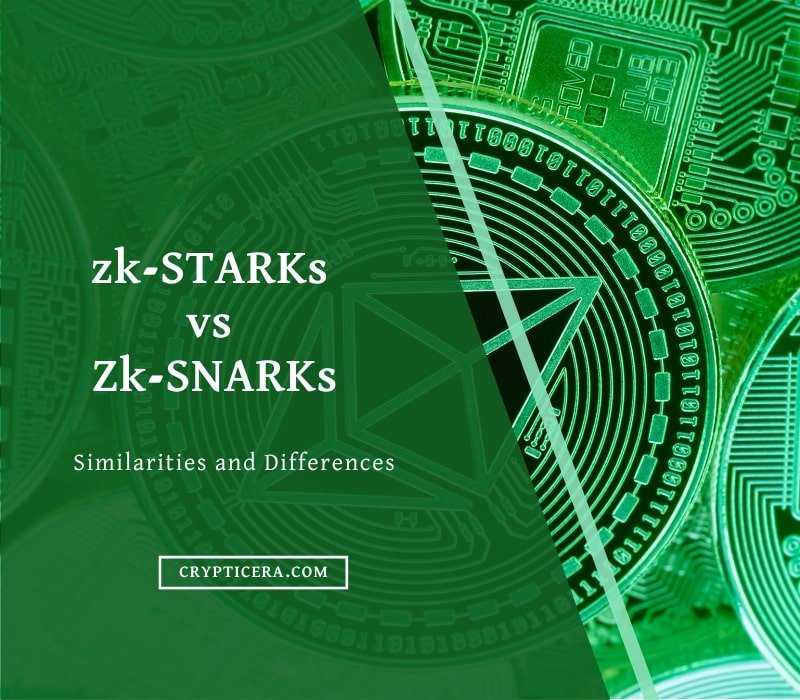Are you trying to decide between Solana and Avalanche for your next blockchain project?
As the blockchain industry continues to evolve, the competition among platforms to provide the best solution for developers and investors alike is becoming increasingly fierce.
In this in-depth comparison, we will uncover the key differences in scalability, security, and performance between the two leading crypto platforms.
We will break down the pros and cons of “Solana vs Avalanche” to help you make a well-informed decision.
Solana vs Avalanche: Key Differences
Before diving into a detailed comparison of Solana vs Avalanche, let’s first understand the key differences in their blockchain working-
| Feature | Solana (SOL) | Avalanche (AVAX) |
|---|---|---|
| Launched Date | 2020 | 2020 |
| Founders | Anatoly Yakovenko | Emin Gün Sirer |
| Market Cap | $4.4 billion | $3.6 billion |
| Consensus Algorithm | Proof of History | Avalanche |
| Transaction Speed | Up to 65,000 TPS | Up to 4,500 TPS |
| Transaction Fees | Low | very Low |
| Decentralized Applications | Yes | Yes |
| Scalability | High | High |
| Security | High | High |
| Non-Fungible Tokens (NFTs) | Magic Eden, Solsea, solanart | Yes (but not popular) |
| Decentralized Exchanges (DEXs) | Serum | Trader JOE |
What is Solana (SOL)?

Solana is a blockchain platform that allows for fast and scalable transactions for decentralized applications. It uses a special algorithm called “Proof of History” (PoH).
This allows for a very high number of transactions per second, up to 65,000 tps. This is much faster than other blockchain networks like Ethereum (15-25 tps).
Solana also has other useful features, such as decentralized storage and community governance.
This means that data can be stored in a distributed and decentralized way, and the community can vote on changes to the platform.
It is also popular for the many decentralized finances (DeFi) projects built on it, like decentralized exchanges and lending platforms.
Key Features of Solana
- High Transaction Speed: Solana is able to process up to 65,000 transactions per second, making it one of the fastest blockchain platforms available.
- Low Transaction Fees: Solana has very low transaction fees, making it an affordable option for developers and users.
- Decentralized Consensus Mechanism: It utilizes a unique proof-of-stake (PoS) consensus mechanism called Proof of History (PoH) to validate transactions on the network. This allows the network to achieve a high level of decentralization.
- Smart Contract Support: Solana supports the creation and execution of smart contracts, which allow developers to build decentralized applications (dApps) on the platform.
- Scalability: It is designed to be highly scalable, with the ability to handle a large number of transactions and users without slowing down.
- Security: Solana has a number of security measures in place to protect the network and its users, including secure cryptographic protocols and a decentralized network of validators.
What is Avalanche (AVAX)?

Avalanche is a decentralized, open-source platform for creating, deploying, and running decentralized applications (dApps) and smart contracts.
It was developed by Ava Labs, a company founded in 2018 by Cornell University computer science professor Emin Gün Sirer.
It is designed to be fast, scalable, and secure, with the ability to process thousands of transactions per second. AVAX utilizes a unique consensus mechanism called Avalanche.
This is based on a decentralized network of validators that work together to reach a consensus on the state of the network.
Avalanche has a native cryptocurrency called AVAX, which is used to pay transaction fees on the platform and can also be used as a means of exchange.
Key Features of Avalanche (AVAX)
- High transaction speeds: Avalanche can process thousands of transactions per second, making it one of the fastest blockchains in the market.
- Decentralized governance: Avalanche has a decentralized governance model in which users can participate in the decision-making process through a voting system.
- Flexibility: It is designed to be flexible and customizable, allowing developers to build a wide range of applications on the platform.
- Scalability: Avalanche uses a unique consensus mechanism called “Avalanche” that allows it to scale to support a large number of transactions and users.
- Security: It is designed to be secure, with a focus on minimizing the risk of attacks such as 51% attacks and double-spending.
- Interoperability: Avalanche is designed to be interoperable with other blockchains, allowing it to easily connect with and exchange data with other platforms.
Solana vs Avalanche (AVAX): The Complete Comparison
Comparing ‘Solana vs Avalanche’ based on Transaction throughput, Scalability, Consensus mechanism, block time, Smart contract language, and popularity in NFT Space.

Which is more Scalable?
Solana is a fast and secure blockchain platform that is designed for scalability and high performance. It uses a proof-of-stake consensus algorithm and claims to have a higher transaction throughput.
Solana supports the development of smart contracts in a variety of programming languages, including Solidity, Rust, and C.
Avalanche is a decentralized platform for building and deploying decentralized finance (DeFi) applications.
It is designed to be fast, secure, and scalable, with a focus on enabling the creation of complex financial products and services.
Solana vs Avalanche: Transaction Speed
Solana claims to be able to process up to 65,000 transactions per second (TPS), with a block time of just under 400 milliseconds.
Avalanche, on the other hand, claims to be able to process up to 4,500 TPS, with a block time of around 1 second.
Solana and Avalanche: Smart Contract Language
Solana is a decentralized platform that uses the “Rust” programming language. Rust is a programming language designed for performance, safety, and concurrency.
It is known for its ability to write high-performance code and for its strong emphasis on memory safety.
Avalanche is a decentralized platform that uses the “Go” programming language.
Go is a programming language designed for building fast, reliable, and scalable applications. It is known for its simplicity, concurrency support, and fast compilation times.
Decentralized Governance
Solana is a proof-of-stake (PoS) blockchain that uses a governance system called the Solana Improvement Proposal (SIP) process to manage changes to the protocol.
The SIP process involves community members submitting proposals for changes to the protocol, which are then voted on by validators (i.e., the nodes that maintain the Solana network).
The validators can either approve or reject the proposal, with the final decision being determined by a supermajority of validators.
Avalanche is also a PoS blockchain that uses a decentralized governance system called the Avalanche Governance Protocol (AGP) to manage changes to the protocol.
The AGP is a smart contract-based system that allows for decentralized decision-making and voting on proposals for protocol changes.
The AGP uses a reputation-based voting system, where users with a higher reputation (based on their stake and participation in the network) have a greater influence on the outcome of votes.
Which Blockchain has Popular DApps?
Comparing Solana vs Avalanche based on popular decentralized Apps (DApps) on their blockchain platforms-
Popular DApps on Solana:
- Serum: A decentralized exchange (DEX) built on Solana that allows users to trade cryptocurrency in a fast and efficient manner.
- Mirror: A decentralized prediction market platform that enables users to create and participate in prediction markets for a wide range of events, from sports and politics to entertainment and finance.
- Anchor: A decentralized finance (DeFi) platform that allows users to earn interest on their cryptocurrency holdings through staking and lending.
DApps on the Avalanche blockchain:
- TraderJoe: It is a decentralized exchange (DEX) built on Avalanche that allows users to trade cryptocurrency in a fast and efficient manner.
- ChainGuardian: A decentralized application (DApp) that allows users to securely store and manage their digital assets using smart contracts on the Avalanche blockchain.
- Pangolin: Another decentralized finance (DeFi) platform that enables users to earn interest on their cryptocurrency holdings through staking and lending.
Solana and Avalanche: NFT Marketplaces
NFT Platforms on Solana:
- Magic Eden: This is a decentralized marketplace for buying and selling unique digital items, including art, collectibles, and in-game items. It is built on the Solana blockchain and allows users to create, sell, and trade NFTs in a transparent and secure way.
- SolSea: SolSea is a decentralized marketplace for buying and selling NFTs, including art, collectibles, and in-game items. It is built on the Solana blockchain and allows users to easily create and sell NFTs through its user-friendly interface.
- SolanArt: SolanArt is an NFT marketplace and gallery that is focused on showcasing and selling digital art. It is built on the Solana blockchain and allows artists to easily create and sell NFTs of their work.
NFT Platforms supporting Avalanche blockchain:
- Element is a marketplace that allows users to buy, sell, and discover NFTs, including art, collectibles, and more.
- NFTrade is a decentralized exchange that enables users to trade NFTs and other digital assets securely and transparently.
- OpenSea is another popular NFT marketplace that allows users to buy, sell, and discover a wide range of NFTs, including art, collectibles, and more.
Note: Solana is a popular blockchain for NFT trading and Minting whereas Avalanche is not.
SOL vs AVAX: Tokenomics and Market Cap
Here is the comparison of Tokenomics and Market cap of both “Solana vs Avalanche” blockchain platforms.
- Solana (SOL) Current Market Cap: $7.9 billion
- SOL Token Circulation Supply: 371 million SOL
- Avalanche (AVAX) Market Cap: $5.08 billion
- AVAX Circulation Supply: 315 million AVAX (44% of total supply)
Solana vs Avalanche vs Ethereum: Better “Ethereum Killer”
Solana and Avalanche both are called “Ethereum killers” for their high-speed transactions, minimal network congestion, and support for Decentralized applications.
| Platform | Transaction Speed | Block Time | Scalability | Consensus Mechanism | Smart Contract Language |
|---|---|---|---|---|---|
| Solana | 65,000 TPS | 400 ms | High | PoH (Proof of History) | Rust |
| Avalanche | 4,500 TPS | 2-5 seconds | High | PoA (Proof of Authority) | Go |
| Ethereum | 15 TPS | 15 seconds | Low | PoS (Proof of Stake) | Solidity |
Conclusion
In conclusion, “Solana vs Avalanche (AVAX)” both are promising blockchain platforms with unique features and capabilities.
Solana stands out for its high scalability and fast transaction speeds, making it suitable for decentralized applications with high throughput requirements.
On the other hand, Avalanche is known for its low transaction fees and ability to support a wide range of assets and applications, including decentralized finance and stablecoins.
Ultimately, the choice between Solana and Avalanche will depend on the specific needs and goals of a project.
Both platforms have their own strengths and trade-offs, and it is important for developers and users to carefully evaluate which one is the best fit for their needs.
FAQs
How does Solana compare to other blockchain platforms?
Solana is designed to be a high-performance platform that can handle a large number of transactions per second. It uses a proof-of-stake consensus algorithm and a novel technique called “gossiping” to achieve fast transaction speeds and low fees.
How does Avalanche compare to other blockchain platforms?
Avalanche is also designed to be a high-performance platform that can handle a large number of transactions per second. It uses a novel consensus algorithm called “Avalanche” to achieve fast transaction speeds and low fees.
What kinds of applications can be built on Solana and Avalanche?
Solana and Avalanche both can be used to build a wide range of decentralized applications, including financial applications, gaming applications, and social media applications.
How do I get started with Solana or Avalanche?
To get started with Solana or Avalanche, you will need to set up a wallet and purchase some of the native cryptocurrency for the platform (SOL for Solana, and AVAX for Avalanche). You can then use the platform’s developer tools and resources to build and deploy your own decentralized applications.


